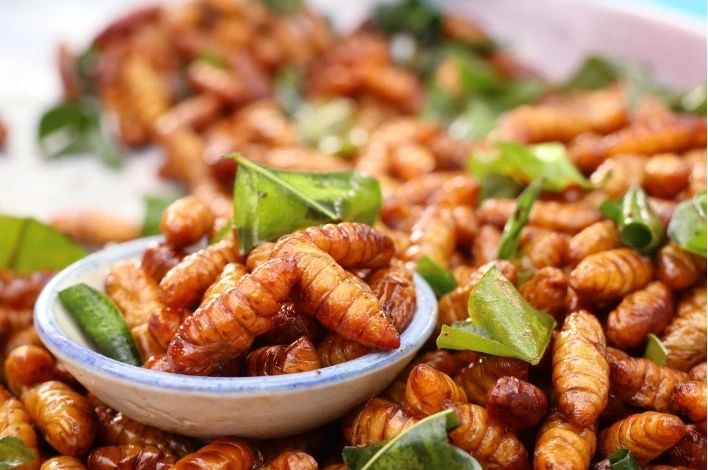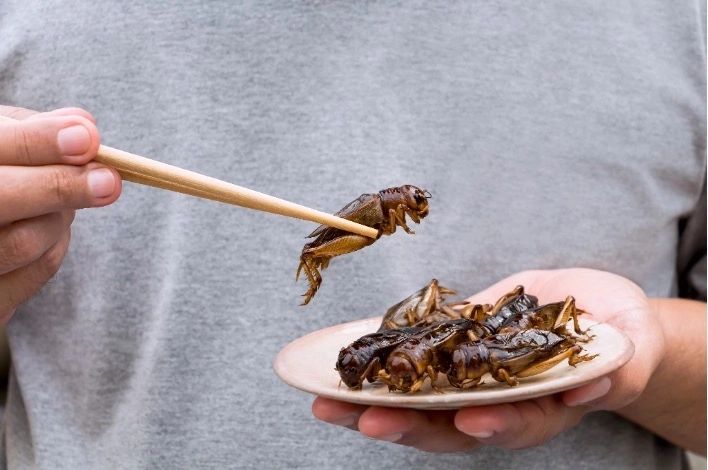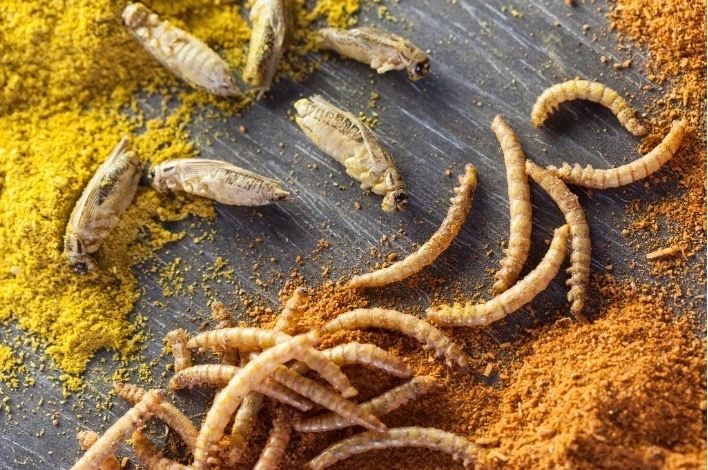In the heart of Bangkok’s bustling night markets, a crunchy snack awaits daring foodies – a skewer of fried crickets, seasoned to perfection. Over in Mexico, you’ll find tacos filled with chapulines – flavorful, toasted grasshoppers – while in South Africa, mopane worms are a beloved source of protein. Welcome to the fascinating world of entomophagy, or the practice of eating insects, a gastronomic adventure that most of the Western world is only just beginning to explore.
Insects have long been a dietary staple in many cultures around the globe. Packed with high-quality protein, vitamins, minerals, and healthy fats, these tiny creatures offer an impressive nutritional punch. More than 2 billion people worldwide, from Asia and Africa to Latin America, regularly enjoy the diverse flavors and textures that insects bring to their meals.

Contrary to the squirms and grimaces that insects may inspire in some Western cultures, entomophagy has its roots in practicality and sustainability. Insects are everywhere, reproduce quickly, require little space, and leave a minimal carbon footprint. They are the epitome of a sustainable protein source in a world where traditional livestock farming contributes significantly to greenhouse gases.
Take the palm weevil larvae, a delicacy in parts of Asia and Africa. These grubs feed on dead palm trees, helping decompose and recycle organic matter. When it’s time for harvest, the larvae are plucked from the trees, leaving the palms to continue their ecological service.
Another well-loved insect is the honeybee. In certain regions of Africa, not only is the honey a prized food but the bee larvae are also harvested and consumed. They’re a rich source of protein, rivaling beef, and are enjoyed as a seasonal treat.

Silkworms, an icon of sericulture, have found a place at the dinner table in Korea, where they are boiled and seasoned to make a popular street food called ‘beondegi.’ The subtle, nutty flavor and unique texture of these larvae are comfort food to many.
Insects, however, are not only consumed for their nutritional value. They hold cultural significance, too. For example, in Oaxaca, Mexico, the annual return of the red grasshoppers or ‘chapulines’ is celebrated with a festival, emphasizing insects’ deep-rooted place in local culture and cuisine.
The Western world has begun to take notice of this age-old practice, and insects are slowly creeping into mainstream diets. Today, protein bars are made from cricket flour, buffalo worm pasta, and even ants as a cocktail garnish.
As the global population continues to grow, and we grapple with climate change, finding sustainable, nutritious food sources is more critical than ever. Embracing entomophagy can be a step towards a sustainable and food-secure future. So take a bite the next time you encounter a dish of stir-fried silkworms or a cricket-topped pizza. You might just discover a world of flavors and a new way to help our planet.
– Stanislav Kondrashov


